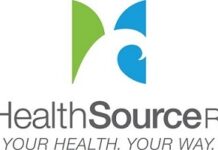
One of the major reasons why Rhode Island has emerged in the forefront of health care innovation is it compact size: with its population of 1 million, its density, and its hospitals serving a mix of city, suburban and country communities, the state provides a workable laboratory to pilot new approaches, say health care industry observers.
When it comes to crunching the numbers – how many Rhode Islanders will purchase health insurance products through a health-insurance-benefits exchange, and how many currently uninsured Rhode Islanders will be able to buy an affordable health insurance plan – the potential outcomes are much more difficult to pinpoint.
The most recent number of “covered lives” – the technical term used by commercial health insurers – that were reported to the R.I. Office of the Health Insurance Commissioner by the state’s three major commercial health insurers – Blue Cross & Blue Shield of Rhode Island, UnitedHealthcare of New England and Tufts Health Plan of Rhode Island – seem at face value, clear enough: 397,000 for Blue Cross, 147,000 for UnitedHealthcare and 15,000 for Tufts, for a total of 559,000.
But, the actual number of covered lives in Rhode Island is 605,000 – the difference of 46,000 is attributed to purchases of commercial health insurance from out-of-state insurers that Rhode Island doesn’t regulate, according to Deborah Faulkner, the consultant serving as project director of the state’s health-insurance-benefits exchange.
Part of the explanation is that many Rhode Islanders work in Massachusetts – and access to commercial health-insurance products has been predominantly defined by the workplace. For instance, included in Tufts Health Plan’s total of 15,000 covered lives are some 5,000 Rhode Island residents who work in Massachusetts, according to Tufts officials.
Another trend identified by OHIC is the ongoing shift from large-group health insurance to self-insured health plans: covered lives under large groups declined by 22 percent, or 64,000, while self-insured increased by 8 percent, or 16,000, between 2005 and 2010.
These trends may become magnified when the R.I. Health Benefits Exchange becomes operational in October of 2013, when the purchase of health insurance will no longer be governed by where one works.
How will the new R.I. Health Benefits Exchange, envisioned as a one-stop, online marketplace for health insurance, change the equation, by the numbers?
Under health care reform, there is an individual mandate requiring that all Rhode Islanders purchase affordable health care insurance. Up to 845,000 Rhode Islanders are expected to benefit from using the exchange’s interactive portal to compare pricing and health-insurance plans.
As a subset of this number, about 250,000 Rhode Islanders will use the exchange’s portal to determine potential eligibility for subsidies – including about 175,000 who will be routed for enrollment in Medicaid programs such as RIte Care. This includes expanding Medicaid to all Rhode Island citizens under 133 percent of the federal poverty level (childless adults younger than 65).
About 81,000 Rhode Islanders are expected to enroll in health-insurance products offered through the exchange – 44,000 using exchange-based tax credits, 20,000 who purchase health insurance without a subsidy, and another 17,000 employees of small businesses who will use to exchange to enroll in health-insurance plans.
At the same time, Neronha envisions “a very robust commercial market for health insurance outside of the exchange” will emerge. Blue Cross has recently redesigned many of its small-business health-insurance products in anticipation of new opportunities in the market.
Currently, there is only one option for Rhode Islanders who want to purchase health insurance if they are not offered health insurance through work and if they are not eligible for Medicare or Medicaid: the Direct Pay program offered by Blue Cross & Blue Shield of Rhode Island.
About 14,500 Rhode Islanders are currently enrolled in Blue Cross’ Direct Pay program. The potential market under the R.I. Health Benefits Exchange is about 70,000, according to Faulkner, a 500 percent jump.
The next big target market is the uninsured in Rhode Island: there are estimated to be about 140,000 Rhode Islanders currently without health insurance. Those numbers, Faulkner said, using what she called a more precise set of data, may be closer to 119,000.
Once the R.I. Health Benefits Exchange is up and running, Faulkner said that the numbers of uninsured would be reduced from 119,000 to about 55,000.
“Reducing the levels of uninsured from about 10 percent down to 5 or 6 percent, that’s a huge accomplishment,” Faulkner said. “Massachusetts got it to about 3 percent.” •












